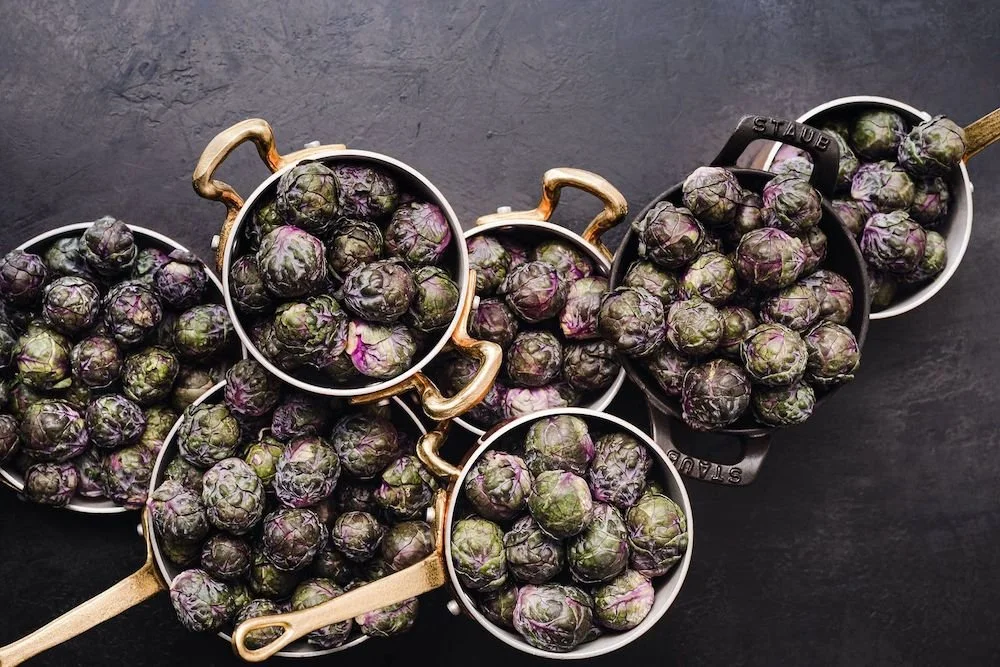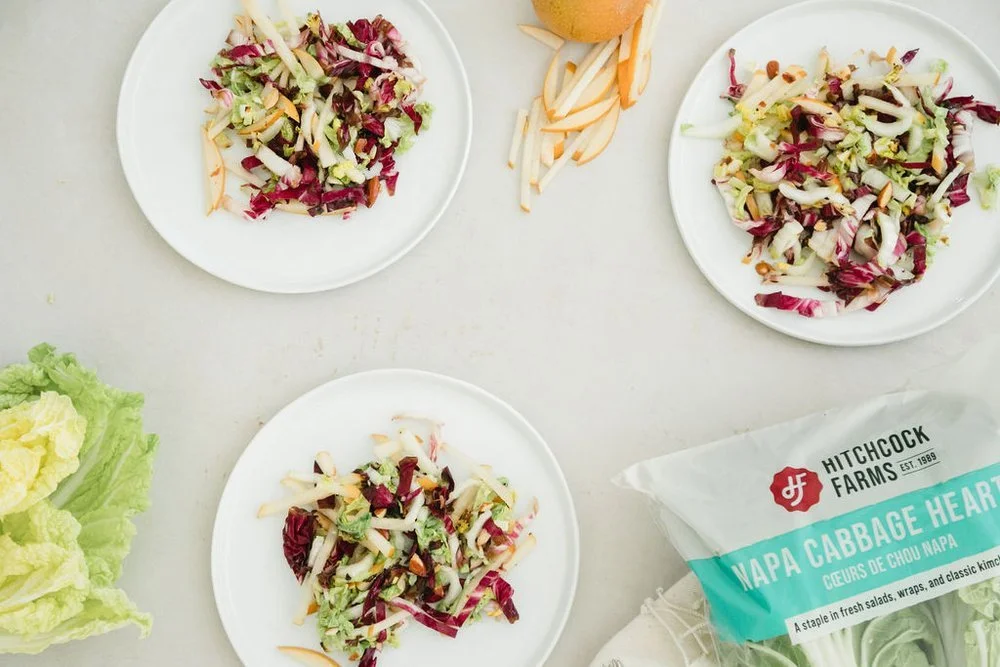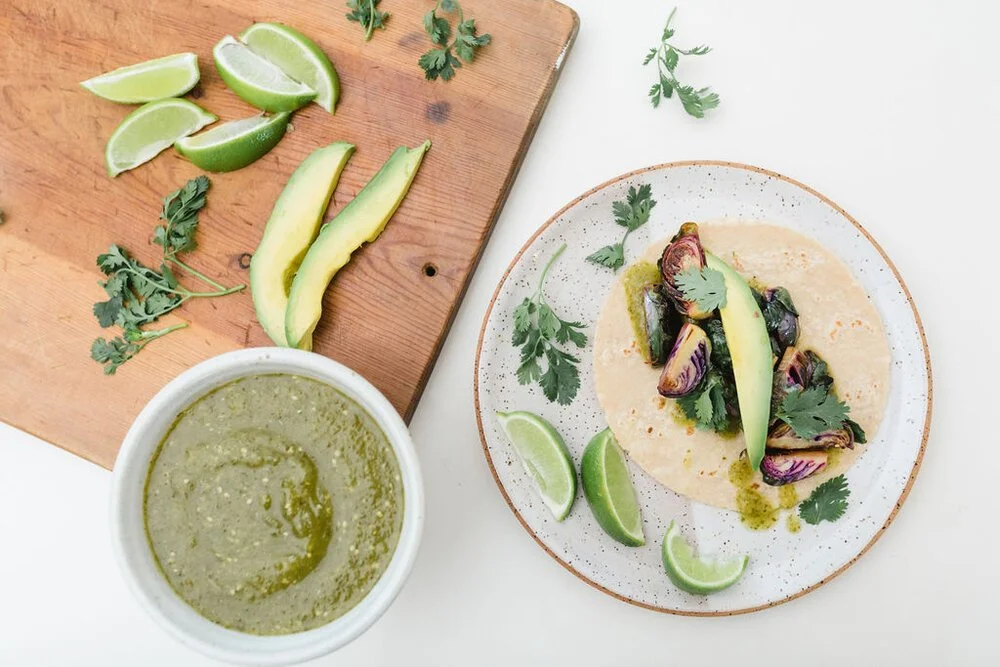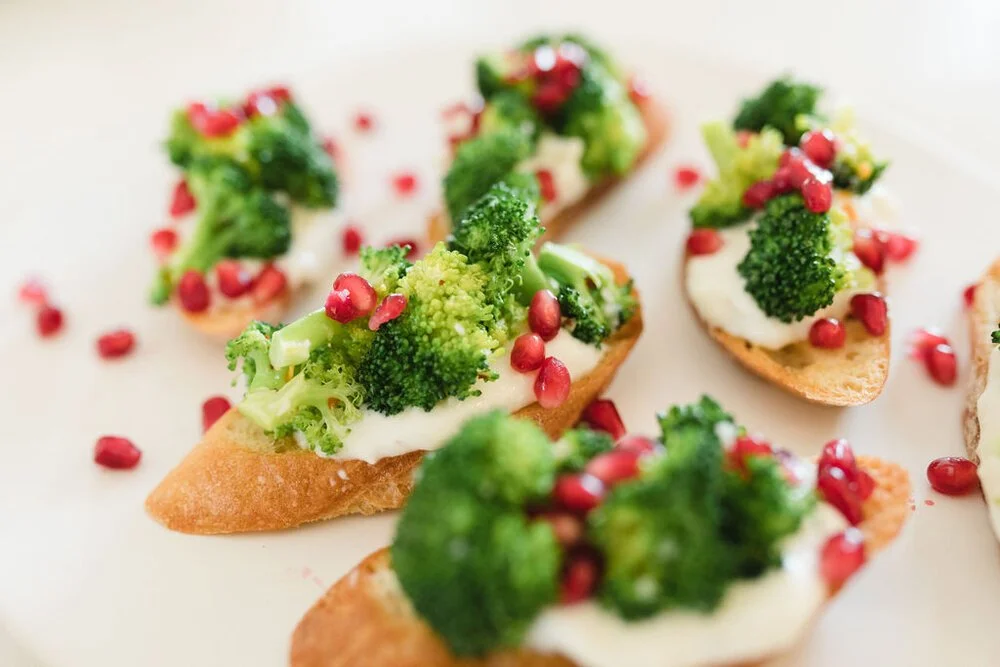There are so many good reasons to eat your vegetables, especially when they're members of the Brassicaceae family.
Brussels sprouts, broccoli, cabbage and kale are standouts in this lineup of nutritious leafy veggies.
Did you know that this type of fresh produce is also an important source of sulforaphane?
If you're not familiar with the beneficial phytochemical, put it on your list of must-have nutrients.
If you're not sure why it belongs on that list, we can help.
Our overview covers everything you need to know about sulforaphane, including what it is, why it works and how to make the most of its healthy benefits.
We're sharing some great recipes too, so read on.
What Is Sulforaphane?
Sulforaphane results from a natural transformation inside the cells of leafy vegetables. It's one of several phytonutrients that plants produce to maintain their overall health.
The organic compound is created by a reaction between glucoraphanin and myrosinase enzymes that reside in plant cells. When plant tissue is broken or cut, the two enzymes interact, generating sulforaphane.
The process occurs each time you prep a cruciferous veggie. Whether you trim, chop, slice or chew, you're releasing an abundance of nutritious sulforaphane per serving.
With every bite you take, the sulforaphane delivers natural goodness that supports better health.
You're enjoying more than a tasty serving of fresh vegetables. You're activating a strong, positive antioxidant response deep inside your immune system.
What are the Health Benefits of Foods High in Sulforaphane?
A side of lightly steamed Brussels sprouts or broccoli works as a perfect pairing with so many entrees. Knowing the vegetables are good for you adds to that enjoyment.
Recent studies focus on multiple benefits that come with making sulforaphane-rich cruciferous veggies a part of your diet.
These are just a few examples of how sulforaphane contributes to overall wellness.
1. Reduced Cancer Risks
The sulforaphane in cruciferous vegetables is believed to play an important role in preventing the growth of cancer cells. As your body processes the compound, your system releases enzymes that help protect against carcinogens.
2. Improved Cardiovascular Health
Atherosclerosis is one of the leading causes of heart disease. Its development results in dangerous plaque buildup that can lead to strokes and heart attacks.
Studies show that sulforaphane can improve overall cardio health, especially blood vessel function.
3. Enhanced Neurological Health
High levels of sulforaphane in a diet can promote better neurological health.
Research has shown that the compound enhances neuron growth and may prevent neurodegenerative conditions, such as Parkinson's disease and Alzheimer's disease.
4. Increased Glutathione Levels
This important antioxidant reduces cell stress that causes numerous health problems, including respiratory disease, rheumatoid arthritis, celiac disease, and lupus.
Eating vegetables rich in sulforaphane helps increase glutathione levels and relieve cell stress.
5. Natural Detoxification Effects
The most effective detox regimes are those that are natural.
Regular consumption of sulforaphane-rich vegetables enables overall good health through its natural detoxification process that maintains essential liver functions.
6. Powerful Anti-Inflammatory Effects
The sulforaphane in cruciferous vegetables is considered a powerful anti-inflammatory.
It's thought to significantly reduce the risk of inflammatory health issues associated with intestinal problems, arthritis, cancer and heart disease.
7. Better Diabetes Control
Sulforaphane has been shown to reduce blood sugar levels in individuals with type 2 diabetes.
Healthy servings of cruciferous vegetables can play an important role in controlling and even preventing adult-onset diabetes.
11 Sulforaphane-Rich Foods
Many edible plants are considered excellent sources of sulforaphane.
However, it's not possible to quantify the amount of sulforaphane in a vegetable because the compound isn't produced until the plant is cut or chewed.
Instead, nutritionists determine a vegetable's glucosinolate content.
As we've noted, this phytochemical activates the process that creates sulforaphane.
Cruciferous vegetables rank high on the register of fresh produce that contains impressive glucosinolate levels.
The list of sulforaphane-rich foods also includes non-cruciferous veggies and edible plants.
Brussels Sprouts – 104 mg per 1/2 cup serving
Garden Cress – 98 mg per 1/2 cup serving
Mustard Greens – 79 mg per 1/2 cup chopped
Kale – 67 mg per 1 cup chopped
Turnips – 60 mg per 1/2 cup cubed
Cabbage – 35 mg per 1/2 cup chopped
Watercress – 32 mg per 1 cup chopped
Broccoli – 27 mg per 1/2 cup chopped
Cauliflower – 22 mg per 1/2 cup chopped
Bok choy – 19 mg per 1/2 cup chopped
Horseradish – 24 mg per 1 tablespoon
There are other vegetables that are considered good sources of sulforaphane, such as arugula, collard greens and radishes.
However, precise levels of glucosinolate aren't available for all vegetables.
How Do You Increase Absorption of Sulforaphane?
Health professionals across all disciplines agree: Overcooking vegetables reduces their nutritional content. It interferes with the bioavailability of important vitamins and minerals, as well as glucosinolate, which is essential for releasing sulforaphane in edible plants.
Our bodies process the diminished nutrients in a serving of overcooked cauliflower or bok choy, but the returns on their nutritional benefits are also greatly diminished.
However, there are several ways to maintain glucosinolate bioavailability and increase the absorption of sulforaphane into a healthy digestive system.
Enjoy Raw Vegetables – The simple act of chewing on a raw vegetable releases the highest levels of sulforaphane. Enjoy uncooked veggies tossed in salads, doused with a favorite dip or shredded into a crunchy garnish.
Gently Steam Produce – Most cruciferous vegetables taste better and retain their bioavailabile properties with a quick stove-top steaming. Avoid boiling and microwaving. These methods are fast and convenient, but they significantly degrade plant nutrients.
Add Mustard Seeds – Mustard seeds and mustard powder are both sulforaphane-rich edibles. Instead of sesame or poppy seeds, sprinkle mustard seeds over a salad. Use them to add flavor to a stew or perk up baked potatoes.
Consider Sous Vide – Home and professional chefs often use this technique as an alternative to traditional steaming. It helps preserve essential nutrients, as well as the taste and texture of fresh produce.
There are several brands of dietary sulforaphane supplements available. Most suggest a daily dose of 400 mcg, but no daily intake recommendations have been established.
Vegetables are always your safest source of sulforaphane.
9 Delicious Recipes High in Sulforaphane
Now that we've explored the importance of glucosinolate and sulforaphane in a healthy diet, let's share recipes that serve up generous helpings of the nutritious compounds.
These are a few of our favorites for breakfast, lunch and dinner, and we've included snacks and sides too. Enjoy!
1. Shakshouka Breakfast Skillet
This Mediterranean classic pairs poached eggs with broccoli, Brussels sprouts and napa cabbage. It's a great way to put a big breakfast on the table and serve up high levels of sulforaphane.
2. Irresistible Cauliflower Fritters
Plane pancakes are fine, but these veggie fritters upgrade the breakfast tradition with amazingly good taste. They're gluten-free, low-carb and an irresistible source of sulforaphane.
3. Broccoli Breakfast Casserole
Here's another crowd-pleasing breakfast recipe that's easily scaled down to just a few servings. Fresh broccoli and mushrooms make the casserole a very healthy way to start your day.
4. Grilled Napa Cabbage Salad
Craft a salad that deserves a place on the table as a main dish. Build on grilled napa cabbage hearts with radicchio, Asian pear and roasted almonds. The results are a perfect blend of flavor, texture and nutrition.
5. Purple Sprout Tacos
Show off your culinary creativity by stuffing tacos with purple Brussels sprouts. The colorful dinner recipe is an easy way to end a busy day, boasting a prep-to-table time of only 20 minutes.
6. Savory Stuffed Cabbage
Stuffed cabbage is a favorite comfort food, and it's a healthy way to make the most of ground beef or pork. You can also stuff fresh cabbage leaves with a vegan medley, but be sure to incorporate the recipe's savory tomato sauce.
7. Pizza Lovers' Pizza
Make dinner a casual affair, and keep it nutritious too. Impress your favorite pizza lovers with our recipe for broccoli and Brussels sprout pie. It's a yummy way to double up on sulforaphane's natural goodness.
8. Roasted Purple Sprouts
How do you turn Brussels sprouts into an enticing finger food?
Simply roast them in olive oil with a sprinkle of kosher salt, and serve as a nutritious nosh. The purple sprouts are especially tasty with a balsamic dipping sauce.
9. Crisp Crostini With Broccoli
This elegant appetizer gets extra points for beautiful presentation. Bright broccoli burrata crostinis liven up plates as delicious snacks and an excellent source of sulforaphane.
Delivering Nutritious Topics to Your Table
It's always easy to enjoy the flavors and textures of favorite veggies. It's even better when you know how much goodness they contribute to a healthy diet.
Our teams here at Hitchcock Farms enjoy delivering nutritious topics to your table and new recipes for your cooking inspiration. Check back with us soon for another dive into more great reasons for eating your vegetables.
It's always our pleasure to share ideas and supply your tables with the freshest premium produce available.












